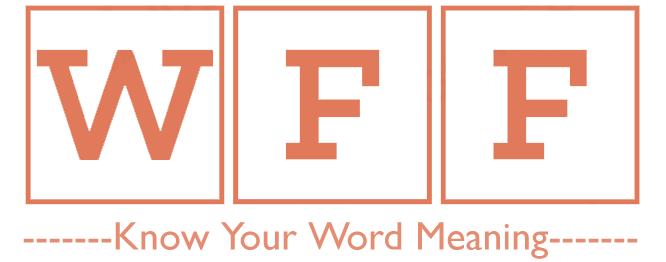Do you know what is the CT Scan Full Form? The full form of a CT Scan is the Computed Tomography Scan. CT Scan is a medical imaging test that utilizes X-rays and advanced computer technology to produce detailed cross-sectional images of the body. This article will provide an in-depth understanding of CT scans, their purpose, preparation, procedure, safety considerations, and more.
Table of Contents
What is the CT Scan Full Form?
CT Scan Full Form – Computed Tomography Scan
What is CT Scan?
A CT scan (also known as computed tomography) is a medical imaging test that uses X-rays and computer technology to produce a three-dimensional image of the internal structures of the body. The CT scan produces cross-sectional images or “slices” of the body, allowing doctors to examine organs, bones, and tissues in detail.
History of CT Scan
The first CT scanner was introduced by British engineer Godfrey Hounsfield in 1971. Hounsfield’s invention revolutionized medical imaging, allowing doctors to see inside the body without invasive procedures. His work earned him a Nobel Prize in Medicine in 1979. Since then, CT technology has continued to advance, becoming faster, more precise, and more widely available.
Are a CT scan and CAT scan the same thing?
CT scans and CAT scans are often used interchangeably, and rightfully so, as they refer to the same diagnostic imaging technique. Both terms refer to Computed Tomography scans, which utilize X-rays and computer algorithms to create detailed images of the internal structures of the body.

How CT Scan Works
The Process of a CT Scan
A CT scan typically takes about 15-30 minutes, depending on the area being examined. Before the scan, the patient may be asked to change into a gown and remove any metal objects. During the scan, the patient lies still on a table that moves through the CT scanner. The machine may make buzzing or clicking noises during the scan, but the patient will not feel anything. In some cases, the results may be available within a few hours, while in others, it may take a day or two.
How Images Are Formed
The CT scanner produces a series of cross-sectional images that can be viewed individually or combined to create a three-dimensional image. The images are created by measuring the amount of X-rays absorbed by the body’s tissues. The computer then creates a grayscale image, where darker areas represent areas that absorbed more radiation. The results are typically interpreted by a trained radiologist.
Benefits and Risks of CT Scan
Benefits of CT Scan
CT scans are a valuable tool for diagnosing and monitoring a variety of medical conditions, including cancer, heart disease, and brain disorders. They are non-invasive and provide detailed information that can help doctors make more accurate diagnoses. CT scans are also quick, painless, and widely available.
Risks of CT Scan
Like all medical procedures, CT scans carry some risks. The main risk associated with CT scans is exposure to radiation. While the amount of radiation used in a single CT scan is relatively low, repeated exposure can increase the risk of cancer. Pregnant women and young children are particularly vulnerable to radiation exposure and should only have CT scans when absolutely necessary. In addition, some people may have an allergic reaction to the contrast dye used in some types of CT scans. It is important to discuss these risks with your doctor before undergoing a CT scan.
Preparing for a CT Scan
How to Prepare for CT Scan
Preparing for a CT scan is relatively easy. Your doctor will give you specific instructions on what you can and cannot eat or drink prior to the procedure. If you are taking medications, your doctor will advise you on whether you should continue taking them or not. Depending on the area being scanned, you may be asked to change into a hospital gown. If you are claustrophobic, you may be given a mild sedative to help you relax during the scan. It’s important to arrive at the hospital or clinic on time to avoid delays and ensure the procedure is performed as scheduled.
What to Avoid Before CT Scan
Before your CT scan, you should avoid eating or drinking anything for a few hours prior to the procedure, unless your doctor instructs you otherwise. You should also avoid wearing any metal objects, such as jewellery or glasses, as these can interfere with the imaging process. It’s important to inform your doctor if you have any allergies, especially to iodine or shellfish, as these are sometimes used in contrast agents used in CT scans.
What CT Scan Results Reveal
CT scans provide detailed images of internal organs, bones, and soft tissues. The results of your CT scan can reveal many conditions or diseases, including:
- Cancer
- Infections
- Bone fractures
- Blood clots
- Internal bleeding
- Inflammation
- Abdominal or chest pain
- Appendicitis
- Gallstones
- Kidney stones
CT Scan vs Other Imaging Tests
CT scans are just one type of imaging test used to diagnose medical conditions. Other common imaging tests include MRI and X-ray. Knowing the differences between these tests can help you and your doctor determine which test is most appropriate for your situation.
Differences Between CT Scan and MRI
Both CT scans and MRIs produce detailed images of the inside of your body, but they use different technology to do so. CT scans use X-rays to produce an image, while MRIs use a strong magnetic field and radio waves. MRIs are better at producing images of soft tissues, while CT scans are better for evaluating bones and detecting small abnormalities in the body.
Differences Between CT Scan and X-Ray
X-rays and CT scans both use radiation to produce images of the inside of the body. However, CT scans are better at producing detailed images of internal organs and soft tissues. X-rays are often used to evaluate bones, such as in a chest X-ray to detect a broken rib. CT scans are also more expensive and expose the patient to more radiation than X-rays, making them less suitable for routine screenings.
FAQs- What Is The CT Scan Full Form?
Q.1. What is CT Scan Full Form?
Ans. The CT Scan Full Form stands for Computed Tomography Scan.
Q.2. What is a CT scan?
Ans. A CT scan is a medical imaging test that uses X-rays and advanced computer technology to produce detailed cross-sectional images of the body.
Q.3. How does a CT scan work?
Ans. A CT scan combines X-rays and computer algorithms to create a three-dimensional image of the internal structures of the body.
Q.4. How do I prepare for a CT scan?
Ans. Your doctor will provide specific instructions, but generally, you may need to avoid eating or drinking before the scan and remove any metal objects. It’s important to inform your doctor about any allergies or medications you’re taking.
Q.5. What can a CT scan reveal?
Ans. CT scans can provide detailed images of internal organs, bones, and soft tissues, and can detect conditions such as cancer, infections, fractures, and more.
Q.6. How long does a CT scan take?
Ans. The duration of a CT scan typically ranges from 15 to 30 minutes, depending on the area being examined and the complexity of the scan.
Q.7. Is a CT scan suitable for everyone?
Ans. While CT scans are generally safe, pregnant women and young children should avoid them when possible due to the potential risks of radiation exposure. It’s essential to discuss any concerns with your healthcare provider.
Thanks for reading What is the CT Scan Full Form? Bookmark our website Whatisfullform.com to know or read our collection of full forms.


